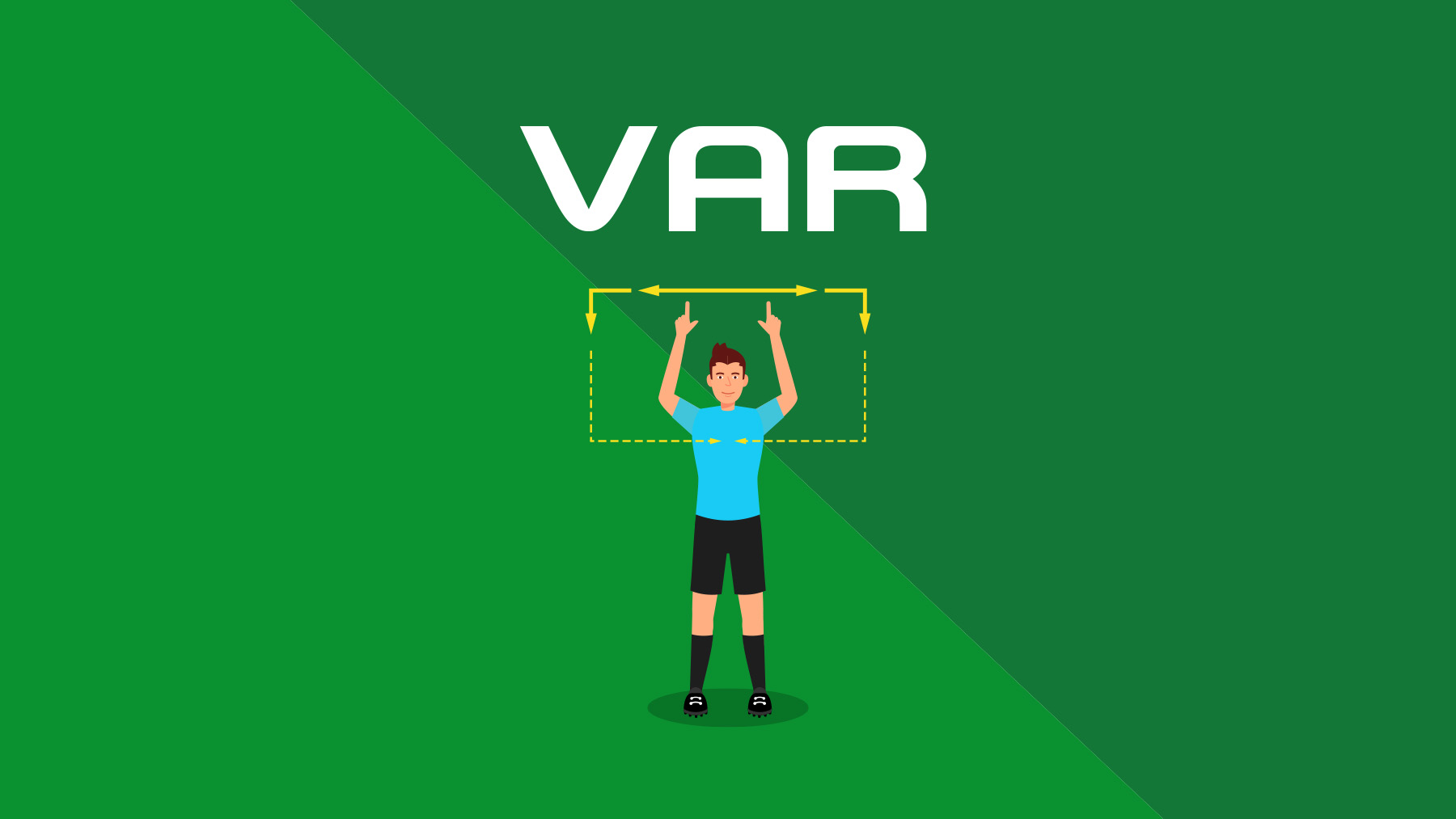VAR

VAR (Video Assistant Referee) refers to a team of match officials who have access to live video footage of the game from multiple camera angles. They are stationed in a separate video operation room (VOR) and can review incidents that the on-field referee might have missed or made a mistake on.
According tot the Laws of the Game, the use of video assistant referees (VARs) is only permitted where the match/competition organiser has met all the Implementation Assistance and Approval Programme (IAAP) requirements as laid out in FIFA's IAAP documents, and has received written permission from FIFA.
What Can VAR Review?
VAR can only intervene in four specific situations where a "clear and obvious error" or "serious missed incident" has occurred:
- Goal/no goal: This includes checking for offside in the build-up to the goal, infringements like fouls or handballs, and whether the ball fully crossed the line.
- Penalty/no penalty: Similar to goals, VAR can review decisions for incorrect penalty awards or missed ones.
- Direct red card (not second yellow card): VAR can check if a red card was wrongly issued or if a serious foul play incident deserving of a red card was missed.
- Mistaken identity: If the referee cautions or sends off the wrong player, VAR can help identify the correct culprit.
How Does VAR Work?
- Incident occurs: A potentially controversial incident happens on the field.
- VAR check: The VAR team reviews the footage to see if a clear and obvious error was made.
- Communication with referee: If a mistake is identified, the VAR informs the on-field referee via a headset.
- Review or no review: The referee can then decide to:
- Stick with the original decision if they disagree with the VAR's assessment.
- Conduct an on-field review (OFR) by looking at the footage themselves on a monitor next to the pitch.
- Change the decision based on the VAR's recommendation.
Principles
In addition to the principles in relation to goal/no goal, penalty/no penalty, direct red card, and mistaken identity incidents, there are more VAR principles as follows:
- The referee must always make a decision, i.e. the referee is not permitted to give ‘no decision' and then use the VAR to make the decision; a decision to allow play to continue after an alleged offence can be reviewed.
- The original decision given by the referee will not be changed unless the video review clearly shows that the decision was a ‘clear and obvious error'.
- Only the referee can initiate a ‘review'; the VAR (and other match officials) can only recommend a ‘review' to the referee.
- The final decision is always taken by the referee, either based on information from the VAR or after the referee has undertaken an ‘on-field review' (OFR).
- There is no time limit for the review process as accuracy is more important than speed.
- The players and team officials must not surround the referee or attempt to influence if a decision is reviewed, the review process or the final decision.
- The referee must remain ‘visible' during the review process to ensure transparency.
- If play continues after an incident which is then reviewed, any disciplinary action taken/required during the post-incident period is not cancelled, even if the original decision is changed (except a caution/sending-off for stopping or interfering with a promising attack or denying a goal or an obvious goal-scoring opportunity (DOGSO)).
- If play has stopped and been restarted, the referee may not undertake a ‘review' except for a case of mistaken identity or for a potential sending-off offence relating to violent conduct, spitting, biting or extremely offensive, insulting and/or abusive action(s).
- The period of play before and after an incident that can be reviewed is determined by the Laws of the Game and VAR protocol.
- As the VAR will automatically ‘check' every situation/decision, there is no need for coaches or players to request a ‘review'.
Review Process
When the VAR team identifies a potential error, they communicate with the on-field referee, suggesting a review. The referee has the option to:
- Accept the VAR's recommendation immediately.
- Conduct an on-field review using a pitch-side monitor, often signaled by the referee drawing a rectangle in the air.
After reviewing the footage, the referee can either uphold or overturn the original decision. This process aims to be quick to minimize interruptions to the flow of the game.
History
The concept of VAR arose from a growing need to address critical officiating errors. The traditional referee system, although central to football's integrity, often fell short in the face of the game's rapid pace and complexity. To combat these challenges, the International Football Association Board (IFAB) and FIFA worked on a series of trials and tests, eventually leading to VAR's formal implementation. Its successful debut in the 2018 FIFA World Cup set the stage for widespread adoption across major leagues such as the Premier League, La Liga, Serie A, and the Bundesliga.
Below are the key milestones how VAR got entered into the field and developed so far:
- 2012-2013: Initial off-line trials by the Royal Dutch Football Association (KNVB).
- 2016: IFAB approves direct communication trials.
- 2018: VAR debut at the FIFA World Cup.
- 2019: Introduction in major leagues like the Premier League, Serie A, La Liga, and the Bundesliga.
